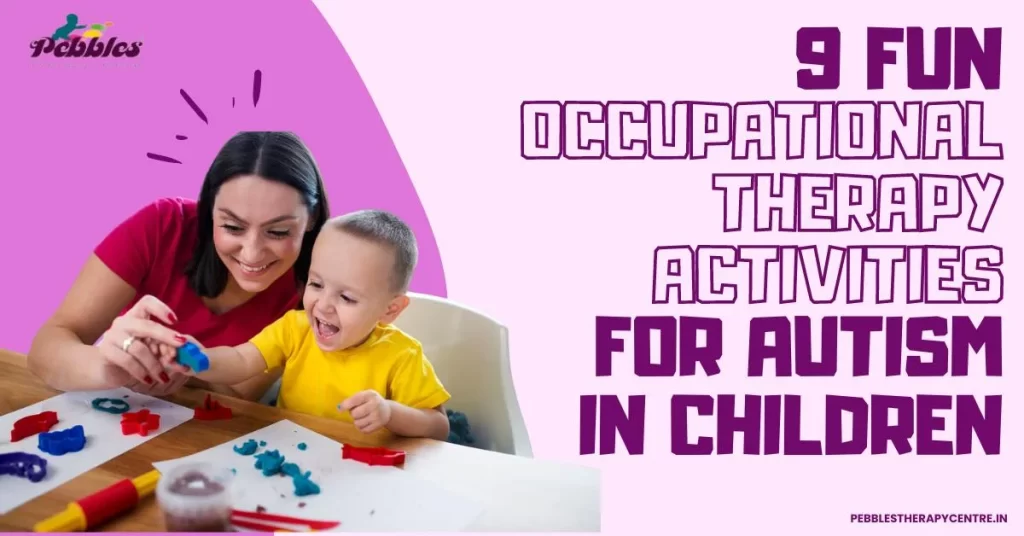9 Fun Occupational Therapy Activities for Autism in Children
Occupational therapy activities are essential for children with autism to help them develop both physically and socially. These activities help to grow gross motor skills and meet the emotional needs of children with autism through playing games, encouraging interaction, and much more. Below you’ll find 9 Fun Occupational Therapy Activities for Autism specifically designed for children.
These OT activities for autism are quick and easy to incorporate in daily routines as parent, carer or clinician, building on your child’s strengths and setting them up for healthy developmental growth.
What is Occupational Therapy for Autism?
Occupational therapy works towards helping children with ASD perform daily activities independently. This covers a wide variety of skills, including socialising, hygiene and grooming habits, and fine and gross motor skills.
Children with autism may struggle to interpret sensory inputs. It can be challenging to regulate their responses to different stimuli such as flavors, scents, surfaces, and bodily feelings. The goal of OT activities for autism is to help children better meet their emotional needs, thereby both improving their emotional interpretation abilities, and, as a result, enabling them to feel better and perform better in their daily activities.
Occupational Therapy Activities for Kids with Autism can let the kiddo learn and play along with other children and help him develop eye contact, communication skills and other co-ordination. These activities can help children with autism to become focused and socialise with other kids.
How Occupational Therapists Work with Autistic Children
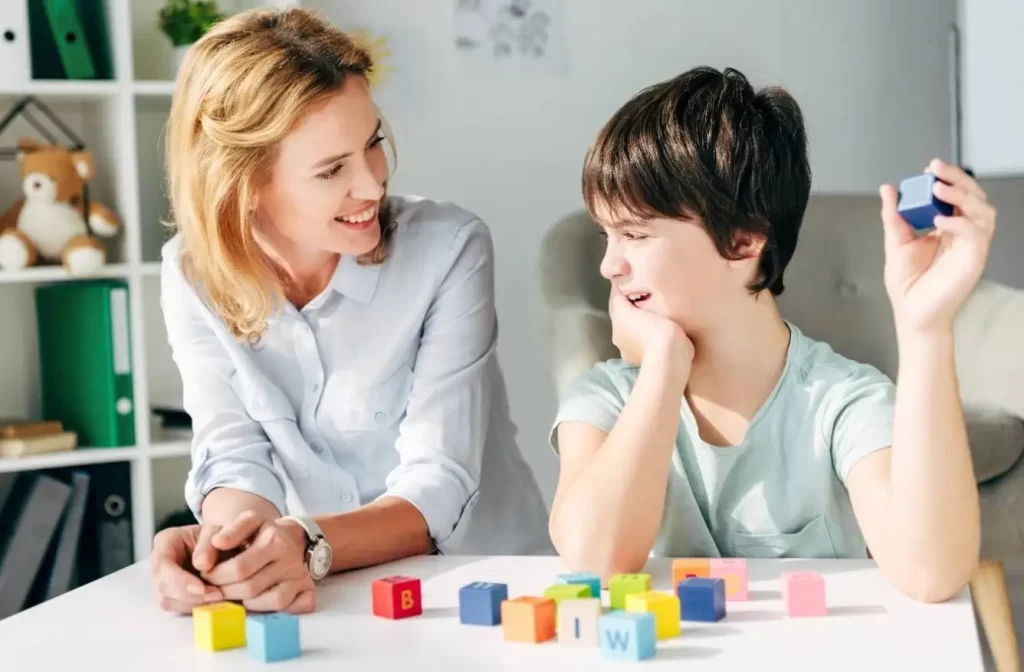
The occupational therapist modifies the type of occupational therapy for kids with autism they are already providing to what is appropriate for this particular child with the intention of assisting the child meet their occupational goals, which typically fall under the following categories.
- Evaluation: the therapist conducts an assessment of the child’s strengths, weaknesses and preferences in sensory processing
- Goal setting: working with a child’s parents and caregivers to set realistic engagement and participation goals.
- Intervention: Therapist will formulate a programme containing Occupational Therapy Activities for Autistic Children as per their needs and integrate it into daily schedules and game sessions so to make it fun and workable to achieve the goals of therapy.
The Occupational Therapy Activities for Autism is very useful for development of a child. It enables children to develop various well needed skills and to overcome many sensory issues. This allows them to perform at their optimum level.
Benefits of Autism Occupational Therapy Activities
Occupational therapists devised activities for kids with autism to maximise entertainment and involvement for children, but the fact that activities for children are effective is also important to improve their ability to tolerate routine tasks, etc. Occupational therapy activities for autism can increase a child’s success at school and in everyday life by:
- Sensory Processing: Most children on the spectrum have issues with sensory processing. These activities can be done in an over-controlled setting – they allow for children to explore sensory input and learn to moderate their responses to visual, auditory, tactile, chemical and olfactory input.
- Fine and gross motor skills: can target both fine motor skills (like grasping, handwriting, sitting still; gross motor skills focus on climbing, jumping, climbing stairs) and gross motor skills (like jumping and climbing). Improved motor skills can boost a child’s confidence and independence in tasks like dressing and self-care.
- Social Skills: Many Autism Occupational Therapy Activities involve social interaction and communication. Some activities will encourage turn taking, for instance. Others might get your child to learn about reading body language. Others might work on initiating conversation.
- Attention and focus: Activities for Kids with Autism is designed to improve children’s ability to use attention and focus as a way of learning and ultimately achieving school success.
Overall, OT Exercises for Autism enable kids on the spectrum to be more involved in their world.
9 Fun & Engaging Occupational Therapy Activities for Autism
The exciting part is about to begin, now that we’ve discussed the benefits of occupational therapy activities for autism. To address a range of requirements, occupational therapists have created a list of nine entertaining activities. From fine and gross motor skills to sensory processing and social interaction, these OT Ideas for Autism will support your child’s growth in these critical areas.
1. Visual Schedules
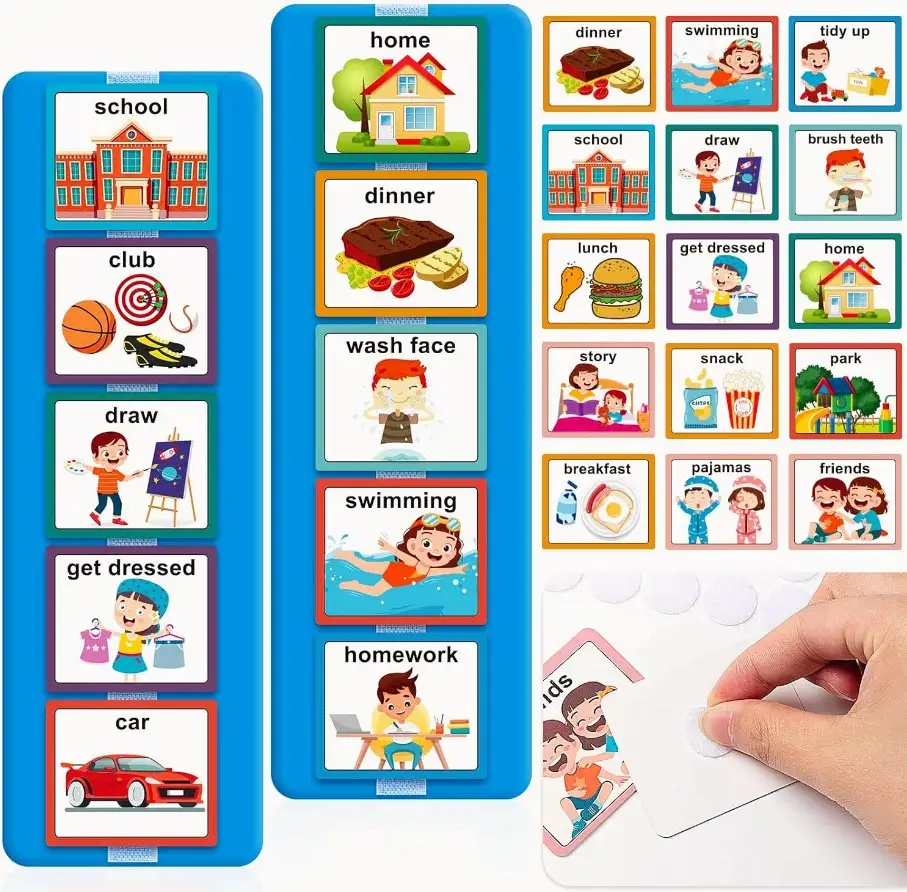
Enhancing visual perception activities for autism, visual schedules offer a structured routine, aiding in occupational therapy treatment ideas for autism. With clear images and text, children can grasp the day’s tasks easily.
Employing occupational therapy fine motor activities for autism, such as placing fun stickers on paper, enhances fine motor skills while creating an engaging schedule. This fosters independence and organization, vital for OT activities for low functioning autism.
It also helps in developing small objects recognition and interaction skills.
2. Place Fun Stickers on Paper

Engaging in art projects for kids with autism, placing fun stickers on paper serves as a creative outlet.
This activity promotes sensory integration autism occupational therapy, stimulating tactile senses. Encourage children to select stickers based on shapes or colors, refining visual perceptual skills. Occupational therapy fine motor activities for autism are further developed as they peel and place stickers precisely.
This simple yet enjoyable task provides a sense of accomplishment and aids in concentration, essential for fine motor skill activities for autistic preschoolers. It also improves their paper plate manipulation skills.
3. Have a Straw Race
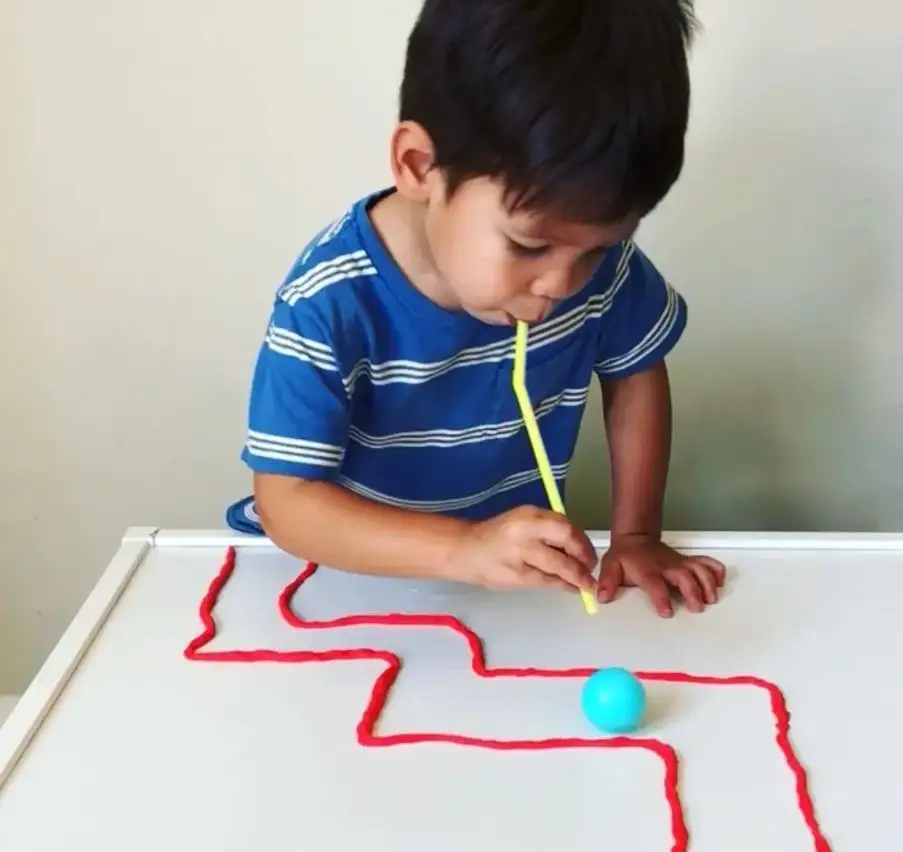
Straw Race is a creative twist in occupational therapy treatment ideas for autism. Engaging in sensory integration activities is pivotal in autism occupational therapy, especially for children with low functioning autism. The Straw Race is a dynamic way to enhance sensory and motor skills while fostering social interaction.
Encourage children to blow through a straw to propel lightweight objects across a race track, promoting oral motor skills and breath control. This activity not only refines coordination but also encourages peer interaction and turn-taking.
Through this OT activity for low functioning autism, children experience the joy of play while developing crucial skills for daily life.
4. Pool Noodles
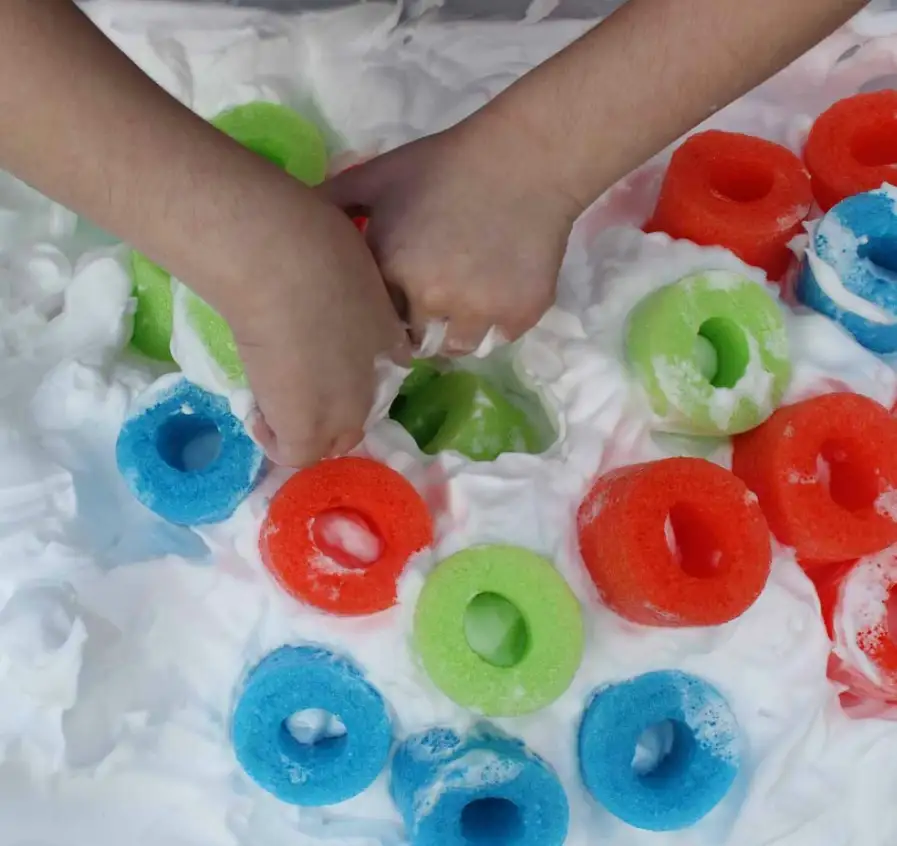
Versatile and colorful, pool noodles are a staple in occupational therapy fine motor activities for autism. Cut into various lengths, they become tools for creativity.
Construct hurdles or tunnels to encourage movement and coordination. Alternatively, slice them lengthwise and utilize them as balance beams, refining gross motor skills.
Incorporating pool noodles into art projects for kids with autism fosters imagination and sensory exploration. This multifaceted material enriches fine motor skill activities for autistic preschoolers, promoting engagement and skill development. It also aids in understanding small objects manipulation.
5. Use Video Clips to Address Social Skills
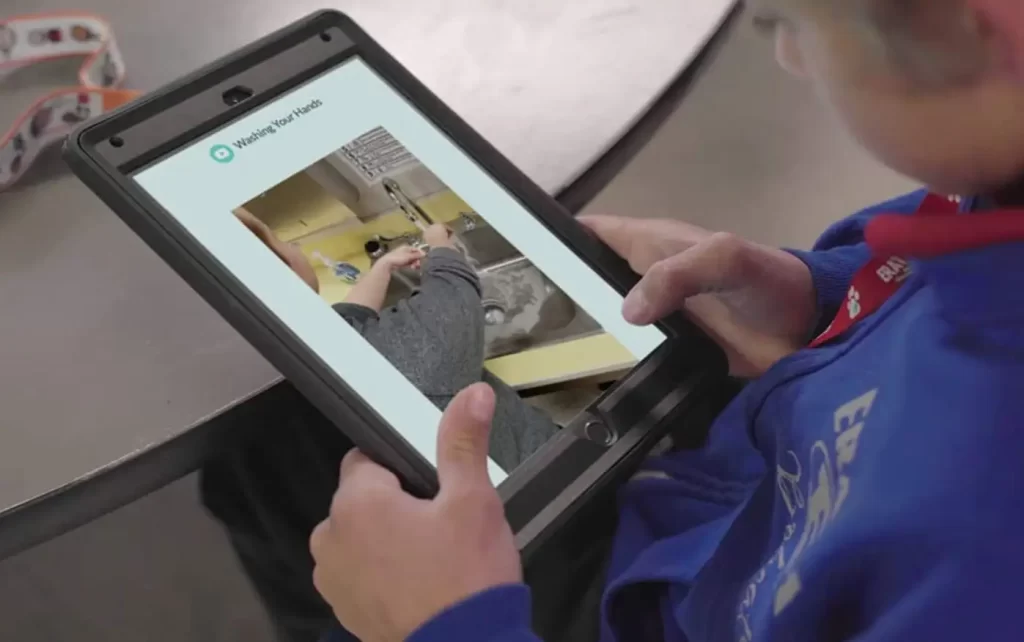
Harnessing technology for occupational therapy treatment ideas for autism, utilize video clips to address social skills. Select clips depicting everyday interactions, fostering comprehension and empathy.
Engage children in discussions, encouraging them to identify emotions and appropriate responses. This activity promotes sensory integration autism occupational therapy through visual and auditory stimuli.
By incorporating multimedia, OT activities for low functioning autism become dynamic and relatable, enhancing social communication skills. It also helps in understanding paper plate usage.
6. Play a Card Game, Such as UNO
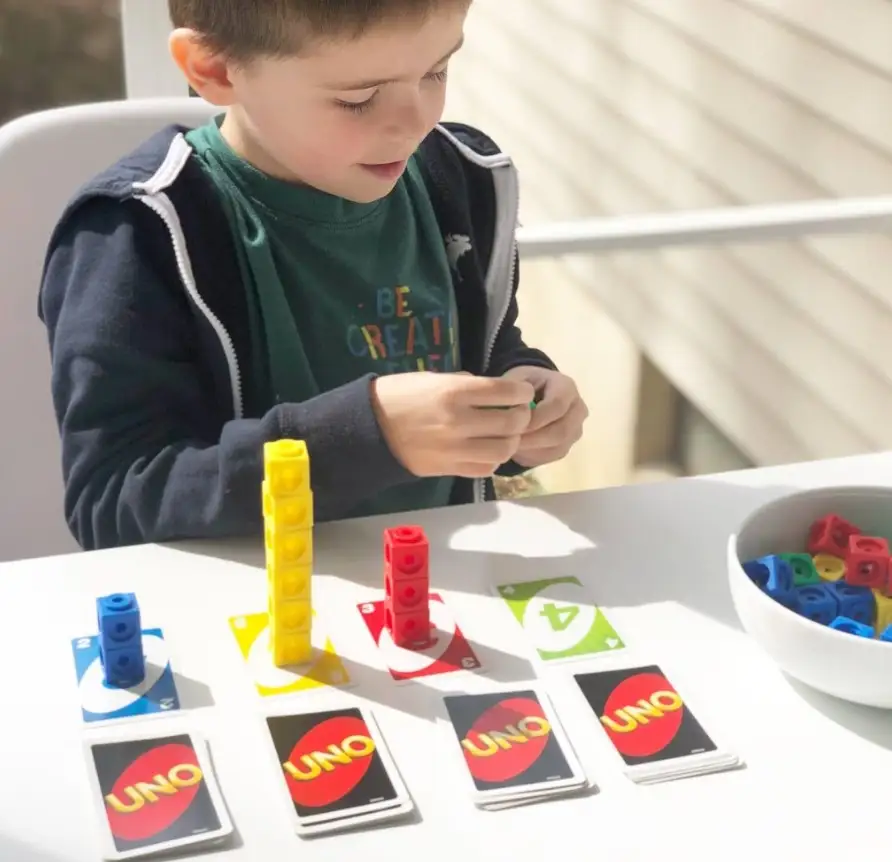
Card games, like UNO, offer occupational therapy fine motor activities for autism while promoting social interaction.
Sorting and holding cards refine fine motor skills, crucial for daily tasks. Encourage turn-taking and rule-following to improve occupational therapy treatment ideas for autism.
This activity fosters cognitive skills such as planning and strategizing. Inclusive and adaptable, card games cater to various skill levels, making them ideal for activities for visual perceptual skills. They also enhance small objects recognition.
7. Play Catch

A timeless activity, playing catch encourages physical activity and coordination. Incorporating different-sized balls enhances occupational therapy fine motor activities for autism, refining grasp and release patterns.
Modify the game by using softer balls for children with sensory sensitivities. Playing catch promotes social engagement and turn-taking, vital for OT activities for low functioning autism.
This activity fosters trust and teamwork while providing sensory input, contributing to overall well-being. It also helps in understanding piece of paper usage.
8. Sort Coins into Piles

Use of everyday materials such as coins is helpful for occupational therapy treatment ideas for autism; an activity such as sorting coins into a series of piles can be used to develop finger coordination, as well as visual skill in discriminating, sorting and tracking the coins.
Sorting by size, shape or denomination uses visual perceptual skills to organise coins into meaningful categories.
It promotes autonomy, being a task children can do independently, and encourages a sense of organisation that is vital for daily life.
This sensory integration autism occupational therapy activity can also be a sensory experience involving feeling the different coins, comparing different weights of the monetary pieces at the same time.
It can also be used to develop fine motor skills in working with small objects, which can be challenging for children with sensory issues.
9. Make Confetti by Tearing Up Paper
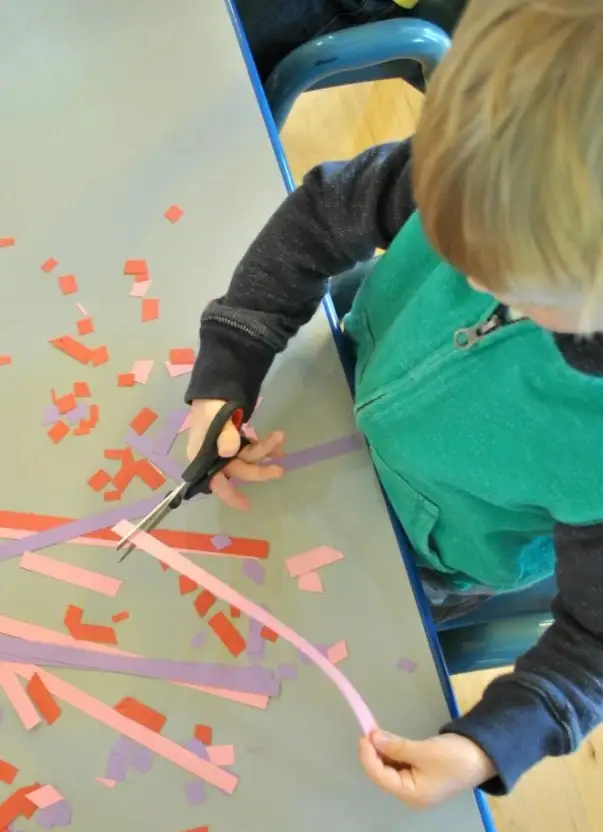
Simple yet engaging, tearing up paper to make confetti serves as a therapeutic occupational therapy fine motor activity for autism. Encourage children to tear along predetermined lines or shapes, refining hand-eye coordination.
This activity fosters creativity and sensory exploration, vital for art projects for kids with autism. Utilize different types of paper, varying textures and colors to enhance sensory input.
Tearing paper promotes bilateral coordination and finger strength, essential for fine motor skill activities for autistic preschoolers. It also aids in understanding paper plate usage.
Other Active OT Exercises to Regulate Stimuli in Autistic Children
Occupational therapy activities for autism frequently extend beyond simple crafts and games. Here are some physical activities to assist in managing sensory input:
- Bouncing on a small trampoline
- Animal movements
- Secure obstacle course
- Demanding physical tasks
Keep in mind to adjust the level and category of the activity to suit your child’s specific requirements and interests.
How to Prepare Your Child for These Activities
Getting your child ready for Occupational Therapy Activities for Autism can greatly impact their overall experience. Below are a few useful pointers to remember:
- Consider how your child responds to various Sensory Preferences, taking into account their sensory preferences.
- Communicate with the Therapist and discuss your child’s strengths, weaknesses, and any sensory sensitivities they may experience with the occupational therapist.
- Start with basic tasks like initiating with activities that are straightforward for your child to comprehend and finish.
- The key is to ensure the activities are fun for your child. Engage Your child and keep them entertained by utilizing toys, games, and activities that capture their attention and interest.
Hope you liked our occupational therapy ideas for autism. By utilizing these suggestions, you can establish a pleasant and encouraging setting for your child to participate in Occupational Therapy activities for Autism. Engaging in these activities can effectively assist your child in reaching their maximum capabilities.
FAQs
Home based autism therapies that work well are sensory play, visual timetables, social stories and routine.
Speaking with a paediatric occupational therapist, creating a calming sensory space at home, and embedding therapeutic routines into a weekday schedule are all examples of activities that parents (or other caregivers) can do to begin occupational therapy with a child
Role plays, social stories, peer interaction, group work, play and many more can all be incorporated into occupational therapy for an autistic kid in his social training.
Whether it helps autistic children by a combination of tailored therapies – which could include behavioural therapy; communication therapy; sensory integration; and social skills training – all of which seems to work well for them (if they just get what they need, when they need it).

